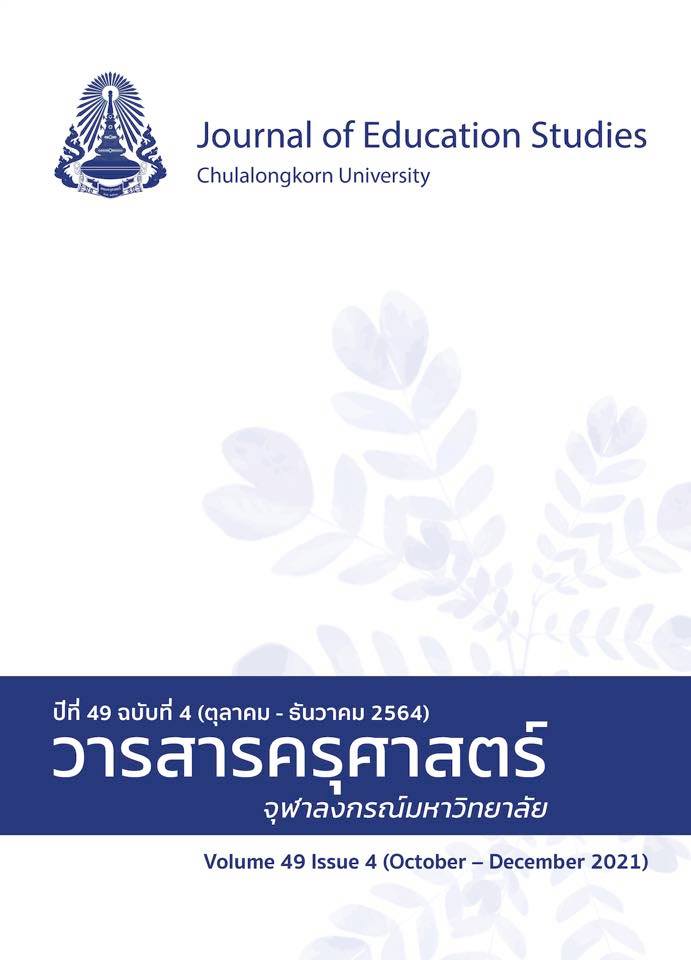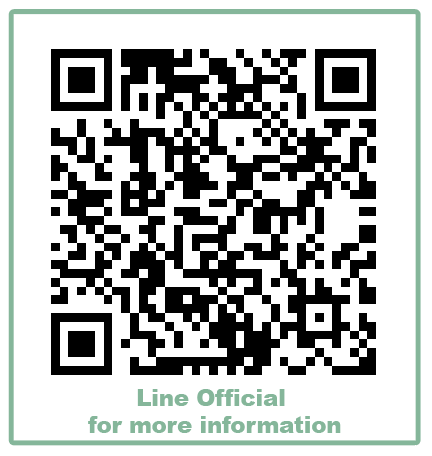การพัฒนาชุดเครื่องมือการประเมินความสามารถด้านการสะท้อนคิดเพื่อพัฒนาระดับการสะท้อนคิดของนิสิตครู
DOI:
https://doi.org/10.14456/educu.2021.69คำสำคัญ:
การสะท้อนคิด, นิสิตครู, การประเมินการสะท้อนคิดบทคัดย่อ
ทักษะสำคัญสำหรับครูในยุคปัจจุบันนี้ คือ ทักษะการสะท้อนความคิดเพื่อพัฒนาการสอนได้ด้วยตนเอง ด้วยเล็งเห็นถึงความสำคัญในพัฒนาและเสริมสร้างนิสิตครูให้มีทักษะนี้ ผู้วิจัยจึงจัดทำงานวิจัยนี้ขึ้นโดยมีจุดประสงค์เพื่อ 1) เพื่อสร้างและพัฒนาชุดเครื่องมือการประเมินความสามารถด้านการสะท้อนคิด และ 2) เพื่อศึกษาผลของการใช้ชุดเครื่องมือที่มีต่อระดับการสะท้อนคิดของนิสิตครู ผู้วิจัยใช้ระเบียบวิธีวิจัยแบบการวิจัยและพัฒนาทางการศึกษาในการพัฒนาชุดเครื่องมือการประเมินความสามารถด้านการคิดไตร่ตรอง กลุ่มตัวอย่างคือนิสิตครูเอกภาษาอังกฤษที่กำลังฝึกประสบการณ์วิชาชีพครูในภาคปลายปีการศึกษา2555 จำนวน 4 คน การวิเคราะห์เชิงคุณภาพและเชิงปริมาณถูกใช้เพื่อวิเคราะห์ข้อมูลที่ได้จากการทดลองใช้ชุดเครื่องมือการประเมินความสามารถด้านการคิดไตร่ตรอง ผลการวิจัย พบว่า 1) ชุดเครื่องมือการประเมินความสามารถด้านการสะท้อนคิดประกอบด้วยองค์ประกอบสำคัญ 3 อย่าง คือ (1) ตัวกระตุ้นความคิด ซึ่งอยู่ในรูปแบบวีดีโอการสอนของนิสิตครูแต่ละคน (2) ตัวเสริมศักยภาพความคิด ซึ่งอยู่ในรูปแบบคำถามเพื่อสะท้อนความคิด และ (3) แบบประเมินคุณภาพความคิด 2) การพัฒนาระดับความคิดไตร่ตรองของนิสิตครูสามารถแบ่งออกได้เป็นสองกลุ่ม คือ กลุ่มที่มีการพัฒนาด้านบวก และกลุ่มที่ระดับความคิดคงเดิม
References
Calandra, B., Brantley-Dias, L., Lee, J. K., & Fox, D. L. (2009). Using video editing to cultivate novice teachers' practice. Journal of Research on Technology in Education, 42(1), 73-94.
Cavanagh, M., & Prescott, A. (2011). The growth of reflective practice among three beginning secondary mathematics teachers. Asia-Pacific Journal of Teacher Education, 38(2), 147-159.
Chinokul, S. (2015). Classroom observation: A self-study of a language teacher educator supervising pre-service teachers. Journal of Education Studies: Chulalongkorn University, 43(3), 1-22.
Chong, S., Ling, L. E., & Chuan, G. K. (2011). Developing student teachers' professional identities: An exploratory study. International Education Studies, 4(1), 30-38.
Clark, D. (2003). Instructional system design-analysis phase. Computing in Childhood Education, 1, 3-27.
Dewey, J. (1933). How we think. Prometheus Books.
Freese, A. R. (2006). Reframing one's teaching: Discovering our teacher selves through reflection and inquiry. Teaching and Teacher Education, 22, 100-119.
Gibbs, G. (1988). Learning by doing: A guide to teaching and learning methods. The University of Gloucestershire. http://www2.glos.ac.uk/gdn/gibbs/
Good, J. M., & Whang, P. A. (2002). Encouraging reflection in preservice teachers through response journals. The Teacher Educator, 37(4), 254-267.
Hatton, N., & Smith, D. (1995). Reflection in teacher education: Towards definition and implementation. Teaching and Teacher Education, 11(1), 33-49.
Hillman, S. L., Bottomley, D. M., Raisner, J. C., & Malin, B. (2000). Learning to practice what we preach: Integrating elementary education method course. Action in Teacher Education, 22(1-9).
Hobbs, V. (2007). Faking it or hating it: Can reflective practice be forced? Reflective Practice, 8(3), 405-417.
Kember, D., McKay, J., Sinclair, K., & Wong, F. K. Y. (2008). A four-category scheme for coding and assessing the level of reflection in written work. Assessment & Evaluation in Higher Education, 33(4),
369-379.
Khayankij, S. (2015). Contemplative observation as a tool for self-reflection enhancement of early childhood graduate students. Journal of Education Studies, Chulalongkorn University, 43(3),
23-38.
Lai, G., & Calandra, B. (2007). Using online scaffolds to enhance preservice teachers' reflective journal writing: A qualitative analysis. International Journal of Technology in Teaching and Learning, 3(3), 66-81.
Lee, I. (2007). Preparing pre-service English teachers for reflective practice. ELT Journal, 61(4), 321-329.
Mason, J. (2012). Scaffolding reflective inquiry-enabling why-questions while e-learning. Research and Practice in Technology Enhanced Learning, 7(3), 175-198.
Perez, L. M. (2011). Teaching emotional self-awareness through inquiry-based education. Early Childhood Research & Practice, 13(2), n2.
Rich, P. J., & Hannafin, M. (2009). Video annotation tools: Technologies to scaffold, structure, and transform teacher reflection. Journal of Teacher Education, 60(1), 52-67.
Schweiker-Marra, K., Holmes, J. H., & Pula, J. J. (2003). Training promotes reflective thinking in preservice teachers. Delta Kappa Gamma Bulletin, 70(1), 55-61.
Smyth, J. (1993). Reflective practice in teacher education and other professions. Learning in the field: The current face of practical experience in professional preparation [Paper presentation]. The 5th National Practicum Conference, Sydney, Australia.
Ward, J. R., & McCotter, S. S. (2004). Reflection as a visible outcome for preservice teachers. Teaching and Teacher Education, 20, 243-257.
Downloads
เผยแพร่แล้ว
How to Cite
ฉบับ
บท
License

This work is licensed under a Creative Commons Attribution-NonCommercial-NoDerivatives 4.0 International License.



